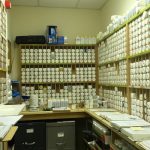Chinese Medicine Herbal Theory
Chinese herbal theory, the theoretical base of Chinese Material Medica, has been established through long-term empirical clinical practice. It defines the character and functions of each herb, which include property, flavor, functional tendency, meridian channel tropism, and toxicity. Chinese herbal theory is based on the theory of Yin- Yang and the Five Phases (Wu Xing), which are the foundation of Traditional Chinese Medicine. Thus, each herb is closely related to Zang-Fu organs and meridian channel systems. This unique structure of theory forms the core of Traditional Chinese Medicine.
There are terms used inTCM theory that differ in meaning from the English definitions of those terms. These include terms such as Qi, the names of the Zang-Fu Organ systems, the names of the Eight Principal patterns of dis harmony in the body, the names of the Six Pernicious Influences involved in disease, other TCM terms, and certain descriptive words. These terms are capitalized in the text.
The Zang-Fu Organ systems are the Heart, Lung, Kidney, Spleen, Liver, Small Intestine, Large Intestine, Bladder, Stomach, Gall Bladder, Triple Heater, and Pericardium. These Organs have a functional significance in TCM that differs somewhat from their meanings in Western medical terminology. For example, in TCM, the Kidney has functions that include not only the filtration of consumed liquids and the absorption of nutrients from those liquids, but also the regulation of mental and emotional states.
InTCM, the term “channel” is used to describe a route of Qi flow through the body. Specific channels can be associated with specific Zang-Fu Organs. The name of the Organ is also capitalized when used to describe a channel. For example, an herb may be described as acting on the Lung channel.

